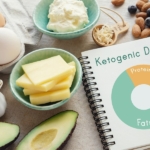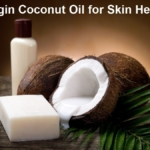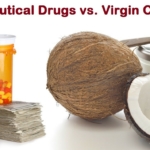By Dr. Mercola
One in three Americans aged 40 and over take a cholesterol-lowering statin drug, and nearly half of people over age 75 are on them, despite their risks, and the fact that “high” cholesterol is not always the enemy it’s made out to be.
Statins have a long list of side effects, and may even lead to the very problem you’re trying to avoid — heart disease — as the drug inhibits both Coenzyme Q10 and vitamin K2.
Statins also reduce squalene, which can raise your risk of immune system dysfunction.
(The depletion of CoQ10 caused by the drug is why statins can increase your risk of acute heart failure. So if you’re taking a statin drug, you simply MUST take Coenzyme Q10 or ubiquinol as a supplement. You cannot get enough of it through your diet.)
Now, the drug industry is rolling out yet another cholesterol-lowering medication that may turn out to be even worse than statins.
US and EU Approve New Class of Cholesterol-Lowering Drugs
The drug, alirocumab (sold under the brand name Praluent) received approval from the US Food and Drug Administration (FDA) on July 24.1,2,3
Two days earlier, the European Commission (EC) granted marketing authorization for evolocumab4 (brand name Repatha) for use in European patients.
These medications are in a new class of drugs called PCSK9 inhibitors, which increases your liver’s ability to soak up and remove low-density lipoprotein (LDL) from your blood by disabling PCSK9’s function to suppress the liver’s reuptake of LDL. (Some of the history behind this drug discovery was recently published by Time Magazine.5)
As reported by CNN:6
“Praluent is approved for patients with heterozygous familial hypercholesterolemia, or HeFh, which is an inherited condition that causes high LDL cholesterol levels. It is also approved for patients who have had a heart attack or stroke…
This offers another treatment option for patients who aren’t responding to currently available medications or who can’t take them because they experience side effects.”
Releasing it to a very small target of people is a classic new drug strategy. However, you can rest assured that the indications will be increased to include nearly anyone with “elevated” cholesterol, which will likely be at least one in four to half of all adults.
PCSK9 Inhibitors Appear to Have Higher Incidence of Side Effects Associated with Statins
PCSK9 inhibitors stand poised to wreak great havoc in those who take it. It’s also worth noting that the effects on cardiovascular morbidity and mortality have not yet been determined for these drugs.
Another point to note is that with the rollout of this newer class of cholesterol drugs, researchers and the media are suddenly talking about how many people cannot tolerate statins due to the side effects.
They are now using that as a selling point for PCSK9 inhibitors, whereas before the adverse events of statins were always minimized or ignored entirely.
This despite the fact that results from a 78-week long study7,8 published in the New England Journal of Medicine in April this year, shows that alirocumab (Praluent) causes higher incidence of many of the same side effects as statins:
- 1.2 percent of patients who received both a statin and bi-weekly injections of Praluent experienced neurocognitive problems, such as memory impairment or confusion, compared to 0.5 percent of those taking a statin only
- 5.4 percent of those receiving statin plus Praluent suffered myalgia (muscle pain) compared to 2.9 percent of the statin only group
- 2.9 percent of the statin/Praluent group experienced eye problems, compared to 1.9 percent of the statin only group
PCSK9 Inhibitors — Another Deadly Wealth Generator?
Price may keep demand for PCSK9 inhibitors low, at least initially. The drug, which is administered as an injection, has a wholesale price tag of $1,200 per month, or $14,400 per year.
For comparison, brand name statin drugs typically cost $500 to 700 per year, and less than $50 a year for generics. Research firm GlobalData predicts Praluent has “extraordinary blockbuster potential” with the capability of generating $17.5 billion in sales by 2023.
The video above and Dan Durham, head of the trade group America’s Health Insurance Plans has stated9 the price of this new drug “raises concerns as to whether consumers and the health system can sustain the long-term cost.”
As of now, side effects are said to include nasopharyngitis (inflammation of the mucous membranes of the upper pharynx), and cold- or flu-like symptoms. But according to some scientists, the mechanism of action of this drug makes far more severe adverse effects very likely.
For starters, PCSK9 inhibitors promise to reduce LDL by as much as 75 percent10 when combined with a statin, and while the drug industry has managed to convince the medical community that LDL is “bad” and the lower you can go the better, researchers have not yet determined whether or not there might be a point at which it might actually become pathologically or dangerously low.
Common sense tells us this is so because we already know it can be dangerous to drive your overall cholesterol down too low. Side effects of excessively low cholesterol include depression, stroke, violent behavior, suicide, and a heightened risk for cancer. As noted in a recent interview with Dr. David Diamond, people with a cholesterol level of 180 or below have a much higher risk for cancer than people whose level is 280.
One recently published decade-long study showed that women who had been on statins had more than twice the rate of breast cancer compared to women who were not on statins. Dr. Diamond believes PCSK9 inhibitors are virtually guaranteed to cause harm. So does Dr. Stephanie Seneff, a senior research scientist at the MIT Computer Science and Artificial Intelligence Laboratory.
How Do PCSK9 Inhibitors Work?
PCSK9 is an enzyme that causes degradation of the LDL receptor that binds to LDL. If you don’t have that receptor, the cholesterol stays in your blood. PCSK9 inhibitors employ man-made antibodies to block the PCSK9 enzyme, which means you end up with more LDL receptors on the surface of the cell (typically a cell in the liver), allowing more cholesterol to be brought inside the cell. This leaves less cholesterol to circulate in your blood stream.
PCSK9 is also a so-called protein convertase, a class of high-level metabolic regulators that are still poorly understood, but they are thought to play a role in maintaining homeostasis in your body, according to Dr. Seneff. PCSK9 is unusual in that, unlike other protein convertases, it does not require calcium uptake to be activated. It’s also unusual in that it becomes sulfated, and Dr. Seneff, who has studied sulfate and the pathology associated with calcium uptake, believes these two observations are red flags indicating PCSK9 inhibition may cause significant harm.
Moreover, the earlier research name for PCSK9 was NARC-1, which stands for “neural apoptosis-regulated convertase 1.” “Neural,” of course, means it relates to or involves your nerves and/or nervous system, and “apoptosis” means “programmed cell death,” and this may hint at some of the potential side effects you might expect when you inhibit this protein.
A 2006 study11 looking at zebrafish found that NARC-1/PCSK9 is expressed in neurons in the cerebral cortex and cerebellum in association with neurogenesis (i.e. the brain’s ability to adapt and grow new brain cells).
When PCSK9 was inactivated in zebrafish embryos, the embryos died approximately 96 hours after fertilization, with the mid- and hindbrain knotted together in a disorganized array of neurons due to the loss of hindbrain-midbrain boundaries. NARC-1/ PCSK9 is also expressed in the human liver, small intestine, kidney, the cerebral hemispheres, and the cerebellum.12
PCSK9 Will Likely Cause Health Problems Associated with Cholesterol- and Sulfate Deficiencies
Getting back to the issue of PCSK9 being sulfated — it is the only protein convertase that is sulfated as part of its regulatory mechanisms. When sulfated, it is inactivated, and this means the LDL receptors can go to the membrane of the cell and pick up LDL particles returning for recycling in your liver.
When not sulfated, PCSK9 binds to the LDL receptors and carries them to the lysosomes for breakdown, meaning PCSK9 reduces the number of LDL receptors available in the cell’s membrane. According to Dr. Seneff, this likely means that PCSK9 is a mechanism that allows your liver to refuse the return of cholesterol-laden particles to the liver when there’s an insufficient amount of sulfate available to safely store the cholesterol in the cell.
“I think it will be a disaster if this new class of drugs is widely used,” Dr. Seneff warns. “I predict liver disease and perhaps even liver cancer. Not to mention the increase in cholesterol and sulfate deficiency throughout the rest of the body, due to the reduction in LDL levels in the blood.”
Cholesterol and sulfur are closely interrelated, and cholesterol sulfate may be essential for the health of virtually all cells. For example, red blood cells produce cholesterol sulfate and this molecule protects the red blood cells from falling apart. If a red blood cell can’t produce enough cholesterol sulfate, it will spill its contents out into the blood (a condition called hemolysis).
In short, the red blood cells need the cholesterol sulfate to stay healthy and to function properly. Cholesterol sulfate may also play a role in the development of heart disease. In short, there’s cause to believe that PCSK9 inhibiting drugs have the possibility of causing a wide range of serious health problems.
PCSK9-Deficient Mice Exhibit Impaired Glucose Tolerance
As noted earlier, unsulfated PCSK9 restricts your liver’s uptake of LDL by degrading LDL receptors (LDLR). It likely does this to protect the liver from taking in more cholesterol than it can properly handle in the context of sulfate deficiency. Research13 shows that “PCSK9 and LDLR are also expressed in insulin-producing pancreatic islet beta cells, possibly affecting the function of these cells.”
The study in question found that PCSK9-deficient mice had less insulin in their pancreas compared to normal mice. The PCSK9-deficient mice were also hypoinsulinemic, hyperglycemic, glucose-intolerant, and their pancreatic islets showed signs of malformation, apoptosis (cellular death), and inflammation. According to the authors:
“Collectively, these observations suggest that PCSK9 may be necessary for the normal function of pancreatic islets.”
Assess Your Actual Need for a Cholesterol-Lowering Drug
As a general rule, cholesterol-lowering drugs are not required or prudent for the majority of people — especially if high cholesterol and longevity run in your family. Also keep in mind that your overall cholesterol level says very little about your risk for heart disease. The following tests can give you a far better assessment of your heart disease risk than your total cholesterol alone:
HDL/Cholesterol ratio: HDL percentage is a very potent heart disease risk factor. Just divide your HDL level by your total cholesterol. That percentage should ideally be above 24 percent
Triglyceride/HDL ratio: You can also do the same thing with your triglycerides and HDL ratio. That percentage should be below 2
NMR LipoProfile: Large LDL particles are not harmful. Only small dense LDL particles can potentially be a problem, as they can squeeze through the lining of your arteries. If they oxidize, they can cause damage and inflammation. Some groups, such as the National Lipid Association, are now starting to shift the focus toward LDL particle number instead of total and LDL cholesterol, in order to better assess your heart disease risk. Once you know your particle size numbers, you and your doctor can develop a more customized program to help manage your risk
Your fasting insulin level: Any meal or snack high in carbohydrates like fructose and refined grains generates a rapid rise in blood glucose and then insulin to compensate for the rise in blood sugar. The insulin released from eating too many carbs promotes fat accumulation and makes it more difficult for your body to shed excess weight. Excess fat, particularly around your belly, is one of the major contributors to heart disease
Your fasting blood sugar level: Studies have shown that people with a fasting blood sugar level of 100 to 125 mg/dl had a nearly 300 percent increased risk of having coronary heart disease than people with a level below 79 mg/dl
Your iron level: Iron can be a very potent oxidative stressor, so if you have excess iron levels you can damage your blood vessels and increase your risk of heart disease. Ideally, you should monitor your ferritin levels and make sure they are not much above 80 ng/ml. The simplest way to lower them if they are elevated is to donate your blood. If that is not possible you can have a therapeutic phlebotomy and that will effectively eliminate the excess iron from your body
Strategies to Reduce Your Risk of Heart Disease Without Drugs
Heart disease is predominantly the end result of unhealthy lifestyle choices, and cholesterol-lowering medications are far from being magic bullets to lower your risk of dying from heart disease. It’s really quite tragic that the medical system has reduced it down to a cholesterol problem — especially since your body needs cholesterol for optimal functioning…
In a nutshell, preventing cardiovascular disease involves reducing chronic inflammation in your body. Proper diet, exercise, sun exposure, and grounding to the earth are cornerstones of an anti-inflammatory lifestyle. For more details on how to naturally reduce your risk of heart disease, please review the following 10 heart-healthy strategies:
- Eat REAL FOOD. Replace processed foods (which are loaded with refined sugar and carbs, processed fructose, and trans fat — all of which promote heart disease) with whole, unprocessed or minimally processed foods, ideally organic, and/or locally grown.
- Avoid meats and other animal products such as dairy and eggs sourced from animals raised in confined animal feeding operations (CAFOs). Instead, opt for grass-fed, pastured varieties, and raised according to organic standards.
- Eliminate no-fat and low-fat foods, and increase consumption of healthy fats. Half of the population suffers with insulin resistance and would benefit from consuming 50 to 85 percent of their daily calories from healthy saturated fats, such as avocados, butter made from raw grass-fed organic milk, raw dairy, organic pastured egg yolks, coconuts and coconut oil, unheated organic nut oils, raw nuts, and grass-fed meats. No- or low-fat foods are usually processed foods that are high in sugar, which raises your small, dense LDL particles. Balancing your omega-3 to omega-6 ratio is also key for heart health, as these fatty acids help build the cells in your arteries that make the prostacyclin that keeps your blood flowing smoothly. Omega-3 deficiency can cause or contribute to very serious health problems, both mental and physical, and may be a significant underlying factor of up to 96,000 premature deaths each year. For more information about omega-3s and the best sources of this fat, please review this previous article.
- You also need the appropriate ratios of calcium, magnesium, sodium, and potassium, and all of these are generally abundant in a whole food diet. To get more fresh vegetables into your diet, consider juicing.
- Optimize your vitamin D level. Some researchers, like Dr. Stephanie Seneff, believe optimizing your vitamin D level through regular sun exposure, as opposed to taking an oral supplement, may be key to optimizing your heart health. If you do opt for a supplement, you also increase your need for vitamin K2.
- Optimize your gut health. Regularly eating fermented foods, such as fermented vegetables, will help reseed your gut with beneficial bacteria that may play an important role in preventing heart disease and countless other health problems.
- Quit smoking and reduce your alcohol consumption.
- Exercise regularly. Exercise is actually one of the safest, most effective ways to prevent and treat heart disease. In 2013, researchers at Harvard and Stanford reviewed 305 randomized controlled trials, concluding there were “no statistically detectable differences” between physical activity and medications for heart disease. High-intensity interval training, which requires but a fraction of the time compared to conventional cardio, has been shown to be especially effective.
- Pay attention to your oral health. There’s convincing evidence linking the state of your teeth and gums to a variety of health issues, including heart disease. In one 2010 study,14 those with the worst oral hygiene increased their risk of developing heart disease by 70 percent, compared to those who brush their teeth twice a day.
- Avoid statins, as the side effects of these drugs are numerous, while the benefits are debatable. If you are taking statins for any reason it is imperative to take Coenzyme Q10, and I believe the best form is the reduced form called Ubiquinol
Help Support Mercury-Free Dentistry
From August 16th to 23rd we launch the fifth Mercury-Free Dentistry Week. Mercury is an incredibly potent neurotoxin; it doesn’t take much to cause serious damage because it’s an absolute poison
We believe in inspiring progress — and nowhere is the progress more evident than the work of Consumers for Dental Choice and its Campaign for Mercury-Free Dentistry.
The sole mission of Consumers for Dental Choice is to end the use of mercury fillings. In the year ahead, with your help, Consumers for Dental Choice will continue to fight to break down any barriers necessary so all consumers have access to mercury-free dentistry.
Resources to Help You Find a Biological Dentist
The following organizations can help you to find a mercury-free, biological dentist:
- Consumers for Dental Choice
- Dental Amalgam Mercury Solutions(DAMS). E-mail them at:
da**@us******.net
or call 651-644-4572 for an information packet - Holistic Dental Association
- International Academy of Biological Dentistry & Medicine (IABDM)
- International Academy of Oral Medicine and Toxicology (IAOMT)
- International Association of Mercury Safe Dentists
- Talk International
Let’s Help Consumers for Dental Choice Get the Funding They Deserve
Consumers for Dental Choice and its team have made amazing progress toward mercury-free dentistry. But there’s still hard work ahead as Consumers for Dental Choice is now breaking barriers which limit consumer access to mercury-free dentistry, forcing federal and state government agencies to be accountable, and organizing briefings for governments around the world.
You can help stop dental mercury today! Please consider donating to Consumers for Dental Choice, a non-profit organization dedicated to advocating mercury-free dentistry.
Read the full article here.
Sources and References:
- 1 NBC News July 24, 2015
- 2 9 Washington Post July 24, 2015
- 3 8 USA Today July 27, 2015
- 4 10 PACE July 22, 2015
- 5 Time Magazine July 24, 2015
- 6 CNN July 24, 2015
- 7 New England Journal of Medicine April 16, 2015; 372:1489-1499
- 11 Journal of Neurochemistry 2006 Aug;98(3):838-50
- 12 Journal of Biological Chemistry 2004 Nov 19;279(47):48865-75
- 13 FEBS Letters 2010 Feb 19;584(4):701-6
- 14 BMJ 2010;340:c2451






 How the Simple High-Fat Low-Carb Ketogenic Diet Continues to Change People's Lives
How the Simple High-Fat Low-Carb Ketogenic Diet Continues to Change People's Lives New Studies Continue to Show that Coconut Oil is the Best Oil for Treating Skin Conditions and Maintaining Healthy Skin and Teeth
New Studies Continue to Show that Coconut Oil is the Best Oil for Treating Skin Conditions and Maintaining Healthy Skin and Teeth New Study Confirms Health Benefits of Coconut Oil and USDA False Claims Against It
New Study Confirms Health Benefits of Coconut Oil and USDA False Claims Against It The FDA has NOT Banned Trans Fats! Traditional Saturated Fats like Coconut Oil Continue to Shine for Alzheimer's Disease but are Condemned by U.S. Dietary Advice
The FDA has NOT Banned Trans Fats! Traditional Saturated Fats like Coconut Oil Continue to Shine for Alzheimer's Disease but are Condemned by U.S. Dietary Advice The Evidence of Coconut Oil's Superiority Over Drugs in Destroying Pathogens Continues to be Published in Peer-Reviewed Journals
The Evidence of Coconut Oil's Superiority Over Drugs in Destroying Pathogens Continues to be Published in Peer-Reviewed Journals
Leave a Reply